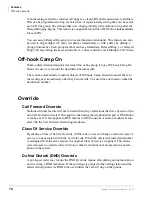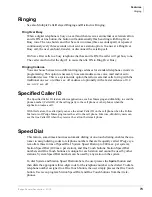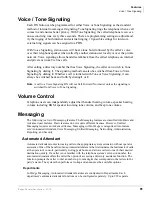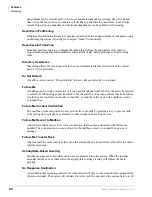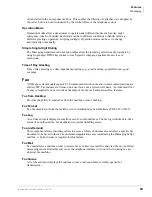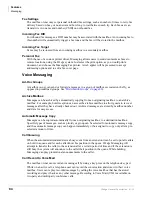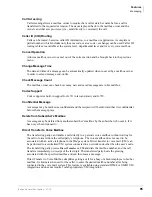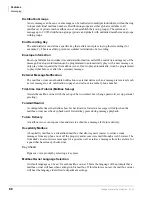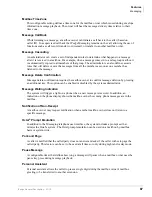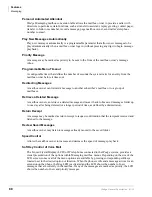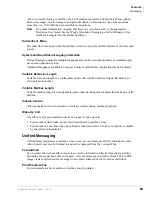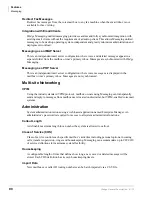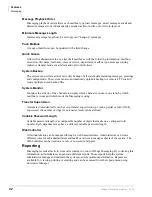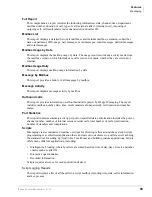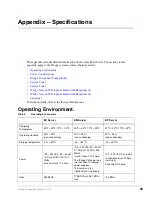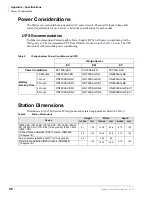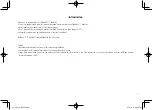
Features
Voice / Tone Signaling
IPedge General Description 01/12
81
Voice / Tone Signaling
Each DN button can be programmed for either Voice or Tone Signaling as the standard
method of internal incoming call signaling. Tone Signaling rings the telephone when a call
comes in and ensures better privacy. With Tone Signaling, the called telephone receives a
one-second ring tone every three seconds. There are programming settings to adjust/mod-
ify the ringing of both internal and external ringing. 10 possible settings for intercom
external ring signals can be assigned to a PDN.
With Voice Signaling, station users will hear a tone burst followed by the caller’s voice
over their telephone speaker when called by another station user locally or over the private
network. Voice signaling allows handsfree talkback from the called telephone on internal
and private network Tie line calls.
After calling a directory number that has Voice Signaling, the caller can switch to Tone
Signaling by dialing
1
. The signaling method can also be switched from Tone to Voice
Signaling by dialing
2
. Whether a call is initiated with Tone or Voice Signaling, it can
always be switched back and forth by dialing
1
or
2
.
Note
A call to a Voice Signaling DN will not Call Forward No Answer unless the signaling is
switched from Voice to Tone Signaling.
Volume Control
Telephone users can independently adjust their handset hearing volume, speaker hearing
volume including BGM, speaker incoming tone volume, and beep tone volume.
Messaging
The following is a list of Messaging features. The Messaging features are classified into Basic and
Advanced user features. Basic features do not require different licenses. However, Unified
Messaging requires an Advanced license. Messaging within IP
edge
is categorized into feature
sets: Automated Attendant, Voice Messaging, Unified Messaging, Networking, Administration,
Reporting, and Security.
Automated Attendant
Automated attendant routes incoming calls to the appropriate system extension without operator
assistance. One of the benefits of an automated attendant is that it eliminates the bottleneck of calls
at the operator’s console, particularly during peak hours, and allows callers to reach their desired
destination quickly. If a caller is not familiar with the telephone system’s extension number, the
automated attendant offers the caller the option of accessing a directory assistance function. The
function prompts the caller to dial a number up to nine digits that corresponds to the letters in the
party’s name. The system then performs a lookup and announces the available options.
Departments
In IP
edge
Messaging, Automated Attendant features are configured in Departments. Each
department’s automated attendant functions can be configured separately. Up to 999 separate
Summary of Contents for ID EDGE
Page 1: ...TOSHIBA Telecommunication Systems Division January 2012 General Description Title Page ...
Page 6: ...This page is intentionally left blank ...
Page 12: ...This page is intentionally left blank ...
Page 24: ...This page is intentionally left blank ...
Page 128: ...This page is intentionally left blank ...




